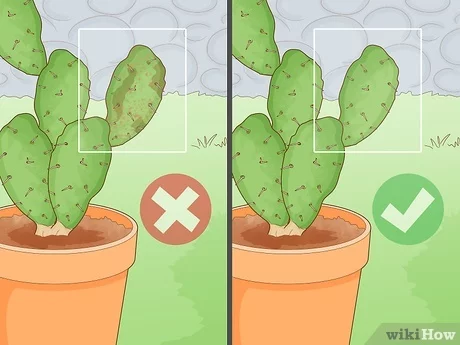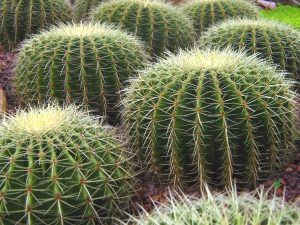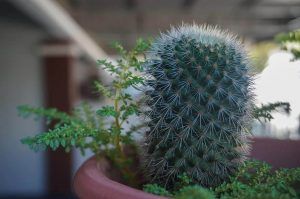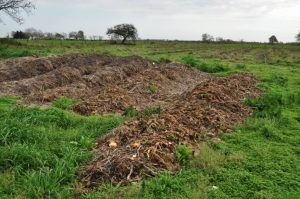Cactus Cuttings: [Concept, Period, Rooting and Planting]

What does it mean to plant by cuttings?
 Planting by cuttings means reproducing a plant through a fragment of it and obtaining a new one with characteristics similar to the one that gave rise to it.
Planting by cuttings means reproducing a plant through a fragment of it and obtaining a new one with characteristics similar to the one that gave rise to it.
The cuttings are obtained from stems, leaves, rhizomes or roots of the mother plant and can be: tender, juvenile, semi-mature, woody, bud, foliar and root.
Sowing by cuttings is very useful for those plants that do not produce seeds or that produce a limited number of them.Through planting by cuttings, a good number of plants can be multiplied from a single specimen: homogeneous and of good commercial quality.
The technique of planting by cuttings is the favorite method of gardening enthusiasts because it is simple and easy to carry out.In the case of cacti, which are succulent and woody plants, planting by cuttings is the fastest and easiest process to carry out.
What is the best time to plant cactus cuttings?
Stem cuttings of the cactus can be planted during the spring and into early summer.In this period, the mother cactus plant recovers its vitality and takes root more easily, it also generates new shoots and continues to develop.
At present and with modern reproduction techniques, the planting of cactus cuttings can be done during any time of the year.Horticulturists consider the time of year in which cuttings are practiced to be a key aspect for the success of cactus reproduction.
How to get cactus cuttings to root correctly?
 In order to get cactus cuttings to root correctly, it is not mandatory or necessary to treat them with auxin-type regulators that accelerate their development and increase the quality of their roots.
In order to get cactus cuttings to root correctly, it is not mandatory or necessary to treat them with auxin-type regulators that accelerate their development and increase the quality of their roots.
In the type of succulent plants such as cacti that are easy to root, fresh cuts should be made shortly before submerging them in the hormonal powder or liquid.
The rooting agents have 2 functions, on the one hand, they encourage the cactus tissue to sprout its roots and, on the other, they protect it from fungi and diseases.The efficiency of the rooting of the cactus cutting depends on the species, the type, the age of the stem, the way it was prepared and the humidity and temperature conditions.
In temperate climates, it is possible to root cuttings of many plants directly outdoors, in prepared soil and in the shade, for most of the year.In cooler regions it is vital to provide the plants with a controlled environment as rooting is often slow and unpredictable.
How should we take the cactus cuttings to plant them?
 The cutting of cacti is different from that of other woody plants, since it is necessary to protect your hands so as not to prick yourself with their thorns.
The cutting of cacti is different from that of other woody plants, since it is necessary to protect your hands so as not to prick yourself with their thorns.
It is a process that consists of removing one of the stems or arms of the plant but doing it very carefully so as not to damage either the cutting or the mother plant.
Once the cactus cutting has been cut, it is necessary to dry the part of the cut, sprinkling ash or sand on the wound.For a period of 5 days, the cutting will remain in a place with little humidity and away from the sun’s rays.
When the cutting has the wound healed and closed, it is recommended to plant the cutting on a moist substrate with the scar downwards.The process of obtaining cactus cuttings is relatively simple, but success depends on several factors:
- The condition of the mother plant and its ability to produce roots.
- Cuttings from young or growing plants.
- The speed in the preparation of cuttings to avoid dehydration.
- Hygiene in the process and the tools to avoid contamination.
How long should we leave cactus cuttings in water?
Cactus cuttings are not placed in water as the watery environment causes stem rot.Once the cactus cuttings have healed the cut wound, they proceed to sow.
Is it convenient to use fertilizer or compost?
 The convenience or not of using fertilizer or compost for planting cactus cuttings will depend on the conditions and the type of plant.
The convenience or not of using fertilizer or compost for planting cactus cuttings will depend on the conditions and the type of plant.
For example, when planting a cactus cutting without rooting, it is advisable to add charcoal ashes and crushed eggshells to the substrate, as it helps provide nutrients to the plant.
In that particular case, it must be done with great care not to have the substrate too compact or waterlogged to prevent the development of fungi.
For normal processes with already rooted cacti, it is recommended to keep the substrate moist with nebulizers and then water normally as if it were an adult cactus.
How long does it usually take for a cactus cutting to come out?
The cactus cuttings will take at least a month to take root, but everything will depend on the climate and the light to which they are exposed.
Although succulents like cacti love the light, they should not be exposed to strong sunlight or for many hours during their rooting and development process.
Bibliography and references
- Bent Ana. (2019). Great Book of Indoor Gardening. First edition. Servilibro Editions, SA Madrid-Spain. PP 43-47.
- Manual of propagation of higher plants. Metropolitan Autonomous University. First Digital Edition 2017, Coyoacán. Mexico PDF.
digital database
- Mipi the corner of plants. How to reproduce cacti by cuttings. Reproduced from: https://www.youtube.com/watch?v=K_GBAviVd1E
- Bricomania.com. How to reproduce cacti by cuttings. Reproduced from: https://www.youtube.com/watch?v=RjTpiB9om90
- How to make plant cuttings step by step. Reproduced from: https://www.youtube.com/watch?v=aos08sSTD3s
- A simple trick to grow plants by cuttings. Reproduced from: https://www.youtube.com/watch?v=GfHWU_y_gX8
- Ecured.com. Cuttings. Reproduced from: https://www.ecured.cu/Esqueje
On our page you can learn more about the reproduction by cuttings of some plants and trees:
- Rose cuttings.
- Rosal cuttings in potato.
- Olive cuttings .
- Rosemary cuttings.
- Lavender cuttings.
- Jasmine cuttings.
- Ivy cuttings .
- Geranium cuttings.
- Mandarin cuttings.
- Cypress cuttings.
- Carnation cuttings.
- Dracaena marginata cuttings.
- Carnation cuttings.
- Camellia cuttings .
- Cactus cuttings.
- Bougainvillea cuttings.
- Bamboo cuttings.
- Sweet potato cuttings.
- Boxwood cuttings.
- Artichoke cuttings .
- Begonia cuttings.
- Tree cuttings.
- Almond cuttings.
- Aloe vera cuttings.
- Oleander cuttings .
- Holly cuttings.


![Photo of How to Fertilize a Cherry Tree: [Dates, Components and Phases]](https://www.complete-gardening.com/wp-content/uploads/2022/08/how-to-fertilize-a-cherry-tree-dates-components-and-phases-390x220.jpg)
![Photo of Cinta Plant: [Cultivation, Irrigation, Associations, Pests and Diseases]](https://www.complete-gardening.com/wp-content/uploads/2022/08/cinta-plant-cultivation-irrigation-associations-pests-and-diseases.jpg)